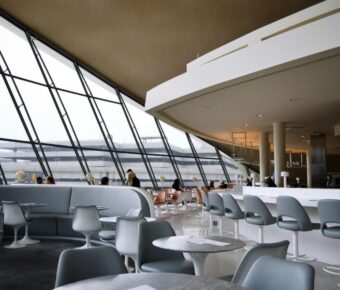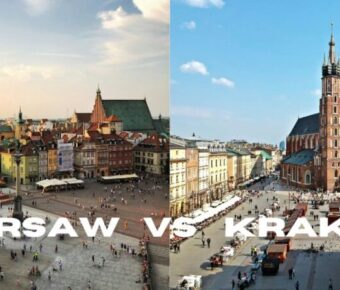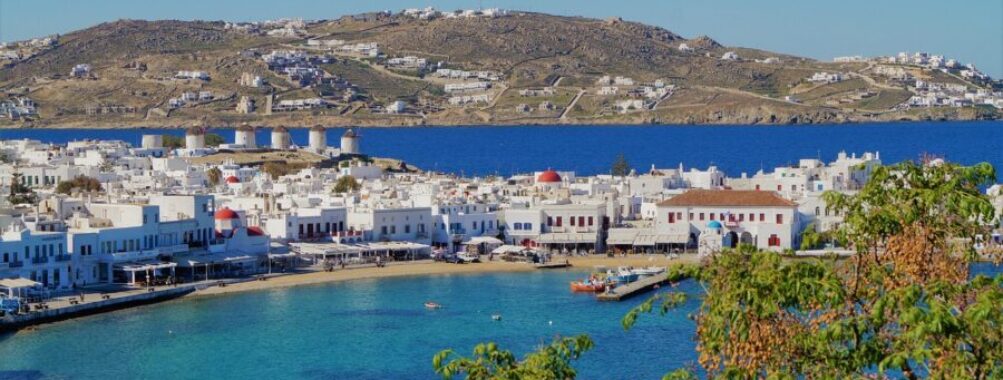
Best Time to Visit Mykonos: The Ultimate 2025 Guide to Greece’s Sun-Soaked Paradise
Thinking about a trip to Mykonos? Timing really does make or break your experience on this Greek island.
The sweet spot for visiting is September and October. You get gorgeous weather, most attractions still open, and—maybe best of all—prices start dropping as the crowds thin out.
Honestly, September and October are hard to beat. You can swim in the Aegean, soak up the last of the summer nightlife, and not feel like you’re elbowing your way through a festival crowd. Sure, June through August delivers the wildest parties and hottest days, but those months get uncomfortably packed and expensive.
If you’re after value and still want that classic Mykonos vibe, May or early October work wonders. The weather’s warm enough for the beach, and you can wander Mykonos Town’s white-washed alleyways without waiting for people to move out of your shot.
Table of Contents
- Key Takeaways
- Understanding Mykonos’ Mediterranean Climate
- Weather Patterns by Season
- Average Rainfall and Temperature
- Mykonos in Peak Summer Months
- Events and Festivities
- Sunbathing and Swimming Conditions
- Challenges of High Season
- Exploring Mykonos During the Shoulder Season
- Advantages for Budget Travel
- Quieter Beaches and Attractions
- Weather Transitions
- Off-Season Travel to Mykonos
- Winter Weather in the Greek Islands
- Cultural Experiences and Local Life
- Must-See Attractions and Activities by Season
- Beautiful Beaches and Beach Clubs
- Hiking and Outdoor Adventures
- Best Time for Water Sports
- Chora and Mykonos Town: Seasonal Experiences
- Little Venice Year-Round
- Nightlife and Dining Throughout the Year
- Nearby Islands for Day Trips
- Santorini: Unique Seasonal Appeal
- Crete: Weather and Attractions
- Cultural Landmarks and Historical Sites
- Panagia Paraportiani Architectural Details
- UNESCO World Heritage Site Excursions
- Frequently Asked Questions
- What are the ideal dates for experiencing Mykonos’s legendary nightlife scene?
- How do the seasons affect the tourist experience in both Mykonos and Santorini?
- When can visitors expect the best balance between pleasant weather and smaller crowds in Mykonos?
- What are the lesser-known perks of visiting Mykonos during the off-peak season?
- Could you highlight the months suitable for beach-goers looking to enjoy Mykonos’s waters?
- Are there specific times of the year when Mykonos offers the most value for money in accommodations and services?
- Book Your Dream Experience
- More Travel Guides
Key Takeaways
- September and October strike the best balance: good weather, open sights, and fewer people.
- July and August? Fun, but crowded and pricey.
- May and early October are great for bargains and still feel lively.
Understanding Mykonos’ Mediterranean Climate
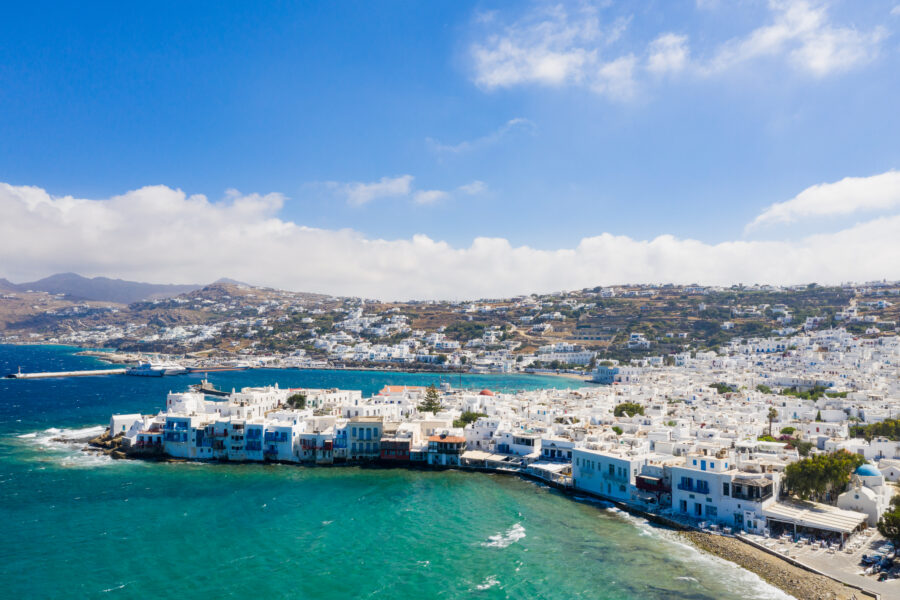
Mykonos sits right in the heart of the Mediterranean, so you’re dealing with distinct seasonal changes. The weather shapes your whole trip—long, dry summers, then mild, wetter winters.
Weather Patterns by Season
Summer (June through August) means hot, sunny days. Temperatures usually hit 77°F to 82°F (25°C to 28°C), and rain barely makes an appearance. It’s a dream for sunbathers, though July and August sometimes crank up the heat a bit much.
Spring (April and May) feels fresh, with temps around 65°F to 75°F (18°C to 24°C). Wildflowers pop up everywhere, and the sea slowly warms. Businesses start prepping for high season, so not everything’s open yet.
Fall (September and October) is just plain pleasant. The sea holds onto summer warmth, air temps hover around 73°F to 79°F (23°C to 26°C), and you finally get some breathing room.
Winter (November through March) cools things off—think 50°F to 60°F (10°C to 15°C), with January at its chilliest. Mykonos quiets down, and many tourist spots close up shop.
Average Rainfall and Temperature
Mykonos gets about 14 inches (365mm) of rain a year, most of it between October and April. December usually takes the crown for wettest month, while July and August often stay bone dry.
Here’s what to expect for temperatures:
- Summer: Highs hit 82°F (28°C), rarely dipping below 70°F (21°C) at night.
- Fall: Cools from 79°F (26°C) down to 64°F (18°C).
- Winter: Averages 57°F (14°C), and it almost never gets colder than 50°F (10°C).
- Spring: Warms up from 61°F (16°C) to 73°F (23°C).
The sea? It’s warmest in August—about 75°F (24°C)—and coolest in February, around 59°F (15°C). The Meltemi winds, blowing hardest in July and August, keep things from getting too stuffy.
Mykonos in Peak Summer Months
When June through August rolls around, Mykonos turns into a full-on summer playground. The beaches fill up, nightlife kicks into high gear, and the water is just begging for a swim.
Events and Festivities
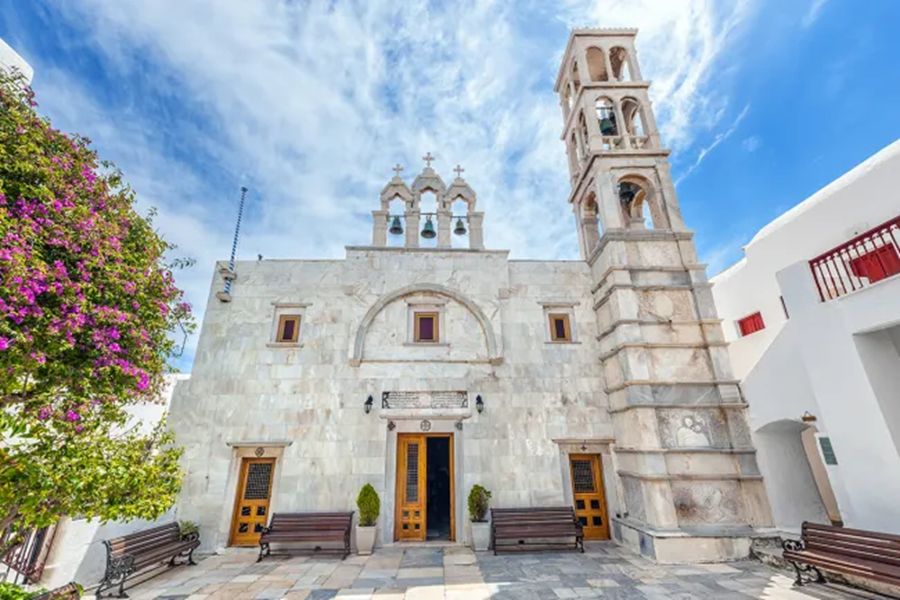
Summer is festival season. The Mykonos Summer Festival dominates July and August, with Greek music, dance, and art popping up everywhere.
Mid-August brings the Feast of Panagia Tourliani in Ano Mera. Expect religious ceremonies, live music, and a lot of local food. It’s a rare chance to see the island’s real traditions.
Beach parties go wild—Paradise and Super Paradise beaches become DJ central at places like Cavo Paradiso and Tropicana. Daytime parties start around 4 PM and can roll all the way to sunrise.
August’s full moon parties are legendary. Dancing under moonlight with the sea shimmering nearby? Yeah, it’s as magical as it sounds.
Sunbathing and Swimming Conditions
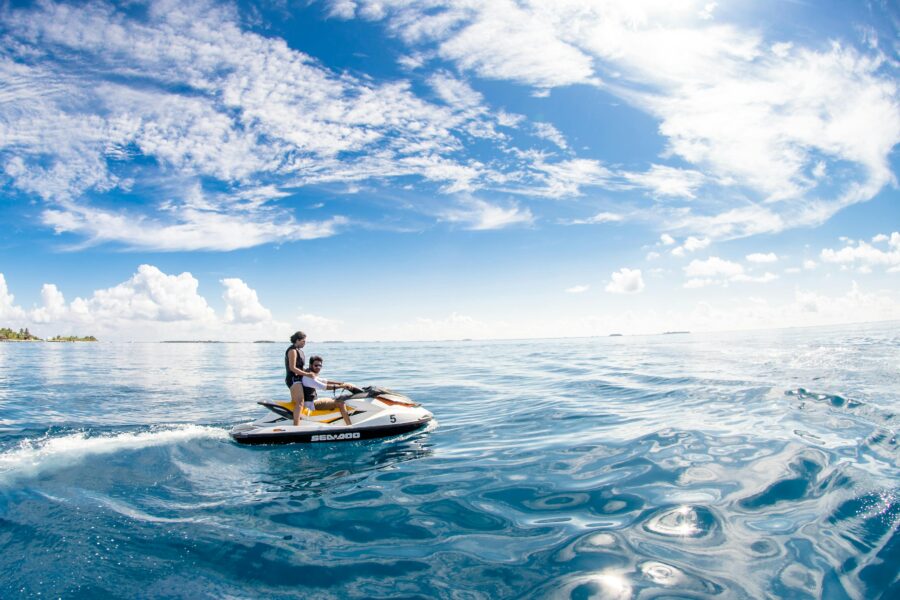
July and August are a beach lover’s dream. The water stays at a comfy 75-79°F (24-26°C), perfect for long swims.
The sun means business, with air temps often hitting 85-90°F (29-32°C). By mid-morning, spots like Psarou and Ornos are packed. If you want a prime sunbed, show up before 10 AM.
Water sports are everywhere. You can:
- Jet ski around Paradise Beach
- Windsurf at Ftelia (the wind’s just right)
- Parasail for those killer views
- Scuba dive at nearby reefs
If you want peace and quiet, hit the beach early. The water’s crystal clear—visibility often stretches 30+ feet down.
Challenges of High Season
Summer in Mykonos isn’t all sunshine. Hotel prices shoot up, sometimes doubling or tripling. If you want a decent place, book at least six months out.
Crowds get intense. Mykonos Town’s narrow streets jam up by evening, and you might wait an hour or more for a table at popular restaurants. Better to reserve days ahead.
Sunbeds at hot beaches like Psarou can cost €50-100 a day, though more reasonable options exist at Agios Stefanos and Kalo Livadi.
Taxis and rental cars get snapped up fast, so arrange airport transfers and rent a car before you even arrive.
The heat can knock you out if you’re not careful. Do outdoor stuff early morning or after 5 PM, always carry water, and don’t forget the sunscreen.
Exploring Mykonos During the Shoulder Season
May-June and September-October? That’s when Mykonos feels just right. Prices drop, crowds thin, and the weather is still perfect for the beach without melting you.
Advantages for Budget Travel
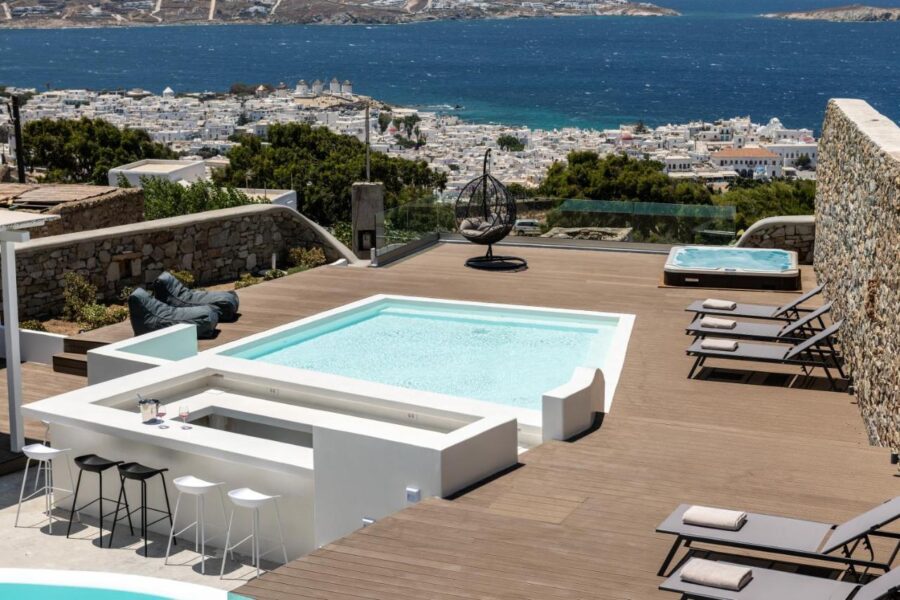
Shoulder season saves you a bundle. Hotel rates drop by 20-40% compared to August, and you’ll see lots of special deals. I’ve found some fantastic boutique hotels for under €100 in early June—those same rooms hit €250+ in peak summer.
You’ll also score:
- Cheaper restaurant meals (shoulder season specials are a thing)
- Car rentals at half the summer price
- Beach loungers that are affordable or even free
- Ferry tickets with better availability and sometimes lower prices
Businesses want your business in these months, so don’t be shy about asking for a deal on longer stays.
Quieter Beaches and Attractions
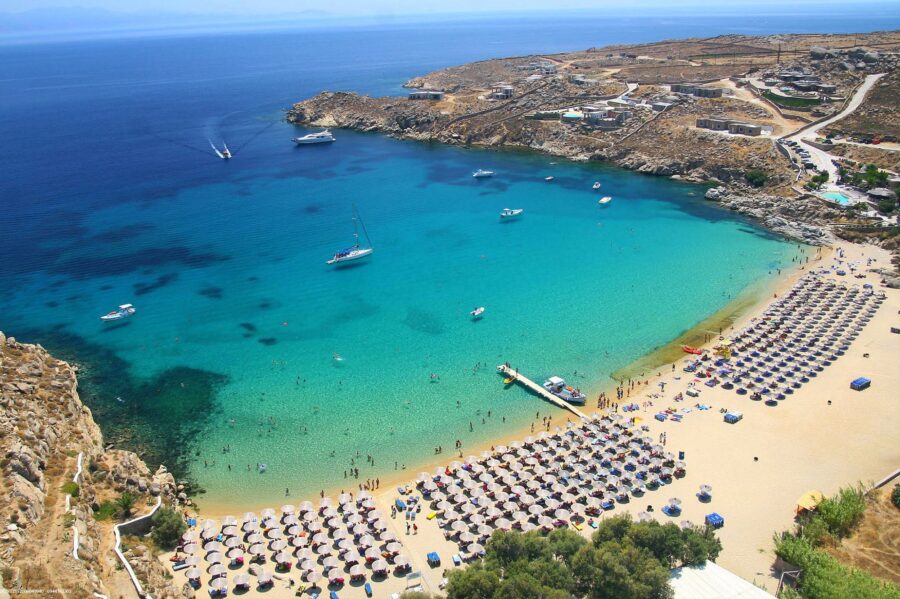
Beach hopping is a breeze. Even the famous Paradise and Super Paradise beaches have room to spare, and you won’t have to wake up at dawn just to snag a spot.
The windmills and Little Venice are finally photogenic without a crowd in every shot. Waterfront tavernas that are impossible to book in summer often have tables ready the same day.
Tour guides have time to actually chat and share stories. It’s a more personal experience, and you get a real taste of Mykonian culture—something that’s easy to miss in party season.
Weather Transitions
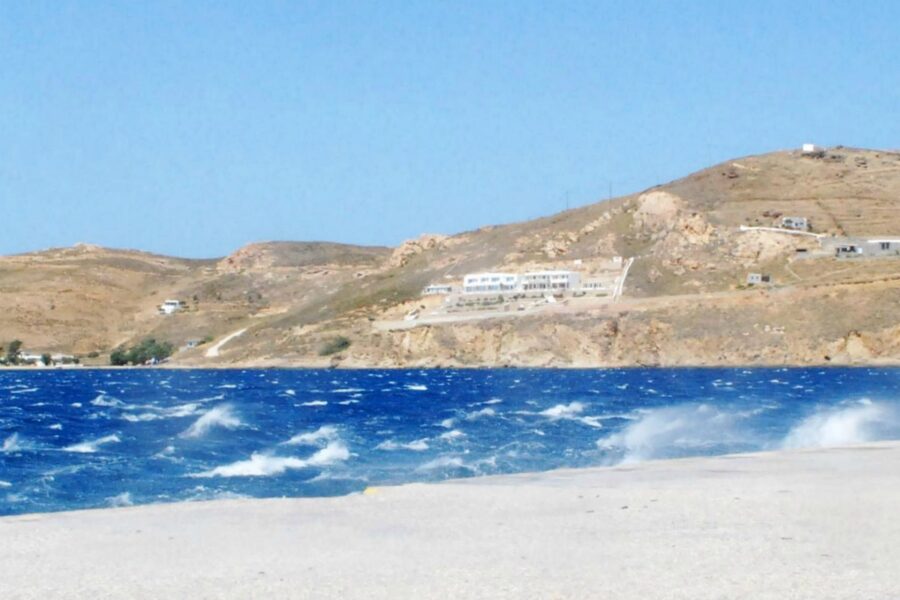
Late May through June brings warmer days (19°C/66°F to 25°C/77°F). The sea’s usually swimmable by late May. You might get a quick rain shower, but they don’t last long.
September feels like summer, but without the madness. The water stays warm at 23°C/73°F well into October. The Meltemi winds, which can mess with ferry schedules in July and August, finally chill out.
Shoulder season sunsets? Incredible. Pink and orange skies that just linger. Bring a light jacket for evenings, especially in October—it cools off fast after dark.
Off-Season Travel to Mykonos
If you want to see the real Mykonos, try visiting in the off-season. The crowds disappear, and the island feels totally different.
Winter Weather in the Greek Islands
From November through March, Mykonos changes gears. Temperatures hang between 50-60°F (10-15°C), which is chilly but still milder than much of Europe. Rain picks up, especially in December and January. You’ll want to pack layers and something waterproof.
Most hotels and restaurants close, but a few stay open year-round, mostly in Mykonos Town. The famous Meltemi winds can get wild, sometimes canceling ferries.
The upside? You get those postcard-perfect whitewashed streets practically to yourself. While beach days are rare, the dramatic winter coastline makes for epic photos.
Cultural Experiences and Local Life
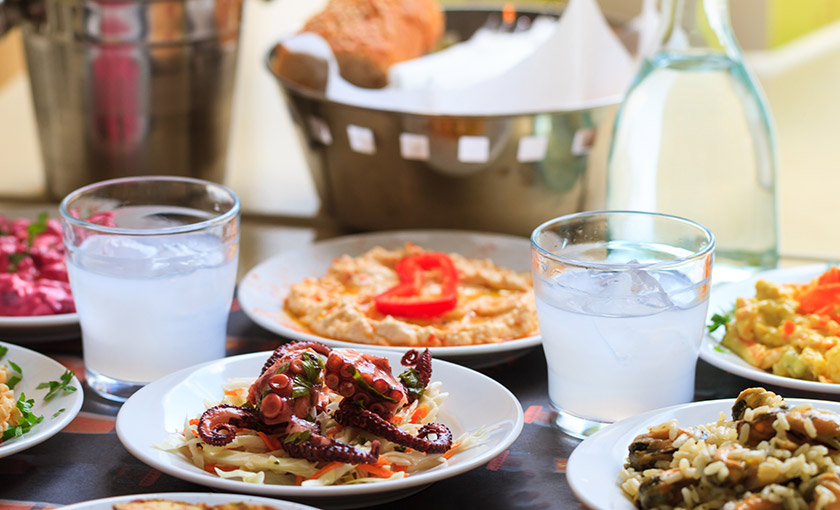
Without the tourist rush, Mykonos feels more like itself. You’ll meet locals just living their lives, not rushing around for visitors. Mykonos Town keeps a quiet charm, and a handful of cafés and shops stay open.
Winter brings traditional Greek celebrations and religious festivals. Museums remain open, usually with shorter hours, but there’s no need to rush.
Prices? They plummet—think 50-70% less than high season. Locals are relaxed and often happy to chat, sharing bits of island life you’d never hear in summer.
Try authentic local dishes at the tavernas that cater to residents. That’s when you’ll taste the real Mykonos.
Must-See Attractions and Activities by Season
Mykonos shifts with the seasons, so what you do here really depends on when you show up.
Beautiful Beaches and Beach Clubs
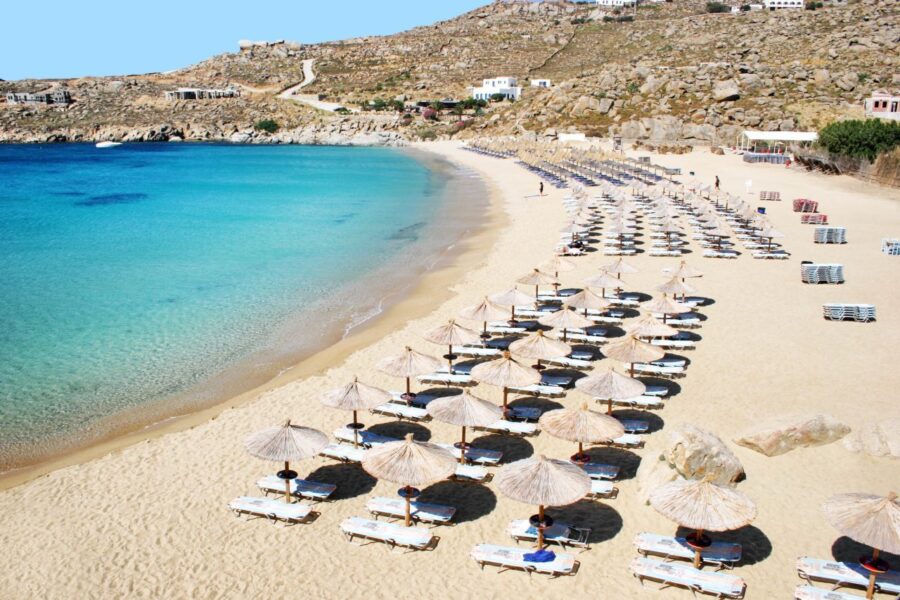
Beach season kicks off in late May and peaks in July and August. Paradise Beach goes all-out in summer, with DJ sets that sometimes last till sunrise. If you’re here in July or August, get to Psarou or Ornos before 11am for a good beach spot.
September is perfect if you want a more chill vibe. The sea’s still warm (about 75°F/24°C), but the crowds have faded. It’s way easier to snag a lounger at places like Scorpios and Nammos without booking weeks ahead.
Beach hopping is best in June and September, when you can actually visit several beaches in one day without fighting for space. Agios Sostis and Fokos stay quiet even in high season—ideal if you want something less flashy.
Hiking and Outdoor Adventures
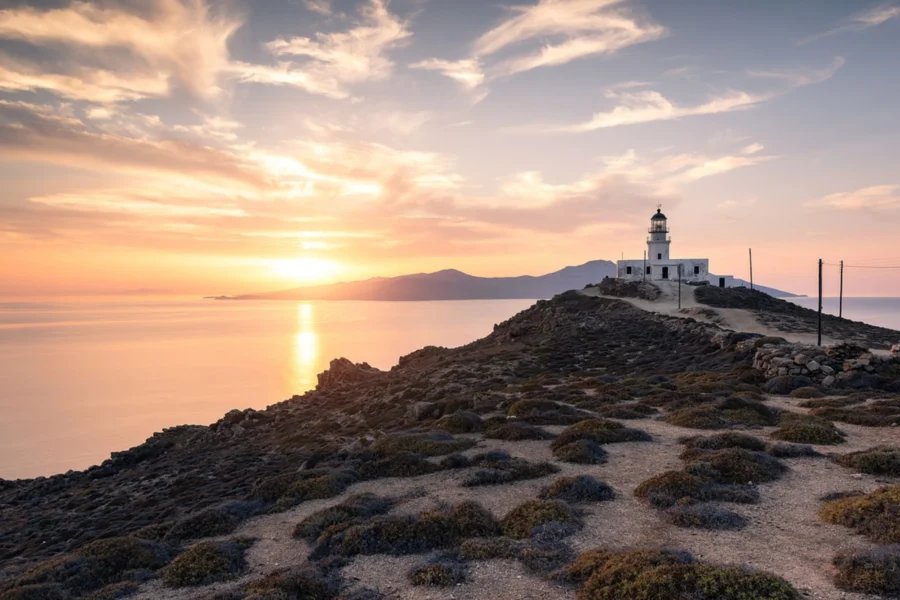
Spring (April-May) brings wildflowers and perfect hiking weather. The island’s rocky hills turn surprisingly green, and the trails to Armenistis Lighthouse are stunning.
October and November are also great for hikes. Temperatures hover around 68-75°F (20-24°C), and you’ll probably have the trails to yourself. The walk from Ano Mera to Fokos Beach is a favorite—moderate, with killer views.
Birdwatchers will love spring and fall, when migratory birds pass through. The wetlands near Panormos beach are worth checking out with binoculars. For something different, hop over to Delos (a short boat ride away) for guided walks among ancient ruins—April, May, or October are the best times for that.
Best Time for Water Sports
If you’re into water sports, aim for June through September. The Meltemi winds blow strong, making windsurfing and kiteboarding especially thrilling.
Korfos Beach really comes alive in July and August when kite surfers chase those peak afternoon gusts. It’s wild to watch—or join in, if you’re brave.
For scuba diving and snorkeling, September is kind of a hidden gem. The water’s still warm, but with fewer boats buzzing around, visibility can hit 30 meters.
Dive centers stick around through October, often with special rates as the season slows down. It’s a good time to try something new without the summer rush.
Jet skiing and parasailing? You’ll find those at Platis Gialos and Paradise Beach all summer long. Mornings before 11am are best—the sea’s calmer, and you won’t have to dodge as many people.
If you’re just getting into paddleboarding, September’s the sweet spot. The water chills out, prices drop, and it’s just easier to learn when you’re not fighting the wind.
Chora and Mykonos Town: Seasonal Experiences

Chora—aka Mykonos Town—shifts its vibe with the seasons. The famous white buildings and twisty streets somehow look totally different depending on when you visit.
Little Venice Year-Round
Little Venice in summer? It’s a scene. June to August, cafés and bars overflow with tourists, especially at sunset when everyone wants that perfect cocktail-with-a-view.
You’ll pay top euro for a table, and honestly, snagging a seat can feel like winning the lottery.
Spring and fall (April-May, September-October) feel more relaxed. Most places stay open, but the crowds thin out, so you can actually hear the waves and snap photos without random strangers in every shot.
Come winter, Little Venice turns almost surreal. It goes quiet—like, really quiet. A handful of cafés stay open, offering a cozy spot to watch storms batter the sea.
The architecture stands out more without the crowds, and there’s something special about those buildings when they’re not swarmed by selfie sticks.
Nightlife and Dining Throughout the Year
Summer turns Mykonos Town into a non-stop party. July and August, clubs don’t even think about closing until sunrise. DJs fly in from all over, and reservations for dinner? Better book weeks ahead.
May-June and September-October hit a nice balance. Most clubs and restaurants are open, but you can actually get a table without begging. The nightlife’s still buzzing, just not so frantic.
Winter flips the script. A lot of places close, but the local tavernas keep things real—authentic Greek dishes, reasonable prices, and a crowd that actually lives here. You’ll get a taste of real Mykonian life, minus the party madness.
Nearby Islands for Day Trips
Mykonos makes a great home base if you’re itching to see more islands. Ferries zip you to some real stunners, each one with its own personality depending on the season.
Santorini: Unique Seasonal Appeal
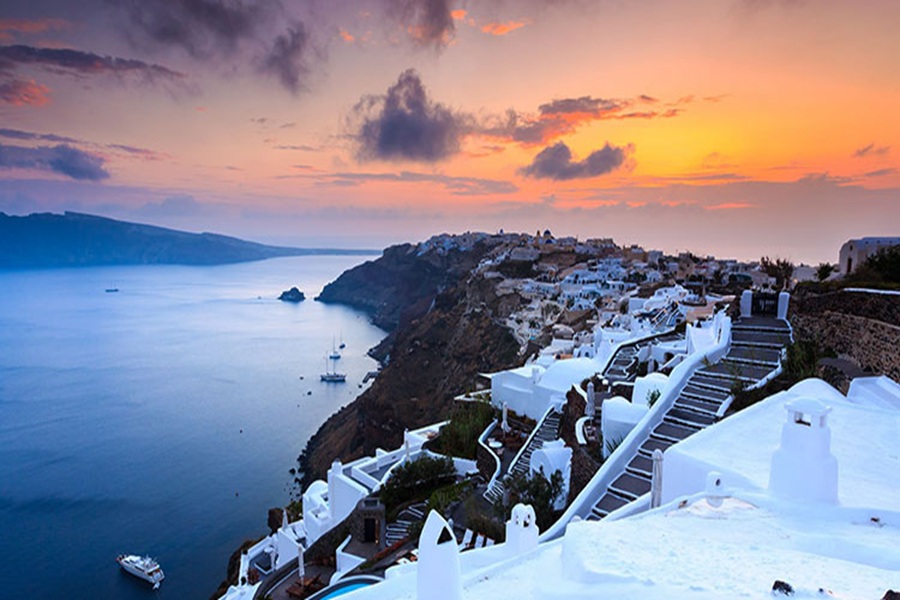
Santorini’s a classic for a reason. May-June or September-October work best if you want nice weather without elbowing through crowds.
July and August mean wild nightlife and perfect beach days, but also higher prices and lines for just about everything. Ferries take 2-3 hours, depending on which one you catch.
Oia’s caldera views? Unreal at sunset, but you’ll want to go in spring or fall for less crowded beaches like Perissa and Kamari.
If you show up in winter, expect a totally different vibe. Most places close, but wandering the quiet villages feels almost dreamlike.
Crete: Weather and Attractions
Crete’s huge, so even a day trip packs in variety. The high-speed ferry takes 3-4 hours, so it’s a long day, but doable if you’re determined.
Spring (April-May) brings wildflowers and comfy temps—ideal for hitting the Palace of Knossos or hiking Samaria Gorge. In summer, beaches like Elafonisi show off their pink sand.
September-October stays warm enough for swimming, and you can wander ancient sites without sweating buckets or fighting crowds.
Winter on Crete feels more local. The island’s milder than the mainland, with daytime highs in the 60s. It rains more, but you’ll see a different side of Greek island life.
Cultural Landmarks and Historical Sites
Mykonos isn’t just beaches and parties. The island hides some real historical treasures, especially if you show up in shoulder season when you can actually take your time.
Panagia Paraportiani Architectural Details
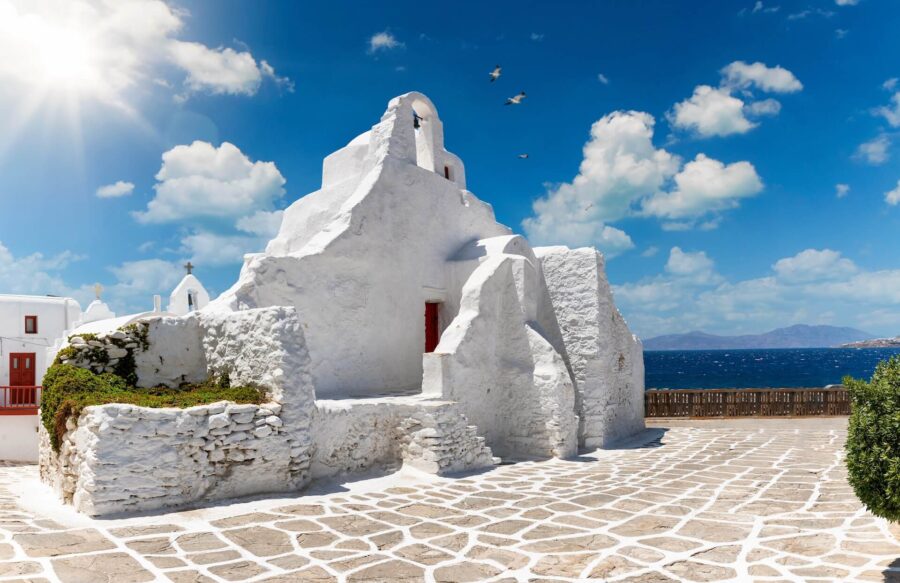
This whitewashed church is actually five little churches mashed together over centuries. The oldest bit dates to the 14th century.
If you go in May or September, you’ll catch soft morning light and fewer tourists. Makes for great photos, trust me.
Panagia Paraportiani‘s weird, asymmetrical shape draws photographers from everywhere. April-June and September-October give you space to stare at the details—the rounded corners, bell tower, and those classic blue touches.
If you time it right, sunset in September casts this golden glow on the limestone. It’s kind of magical.
UNESCO World Heritage Site Excursions
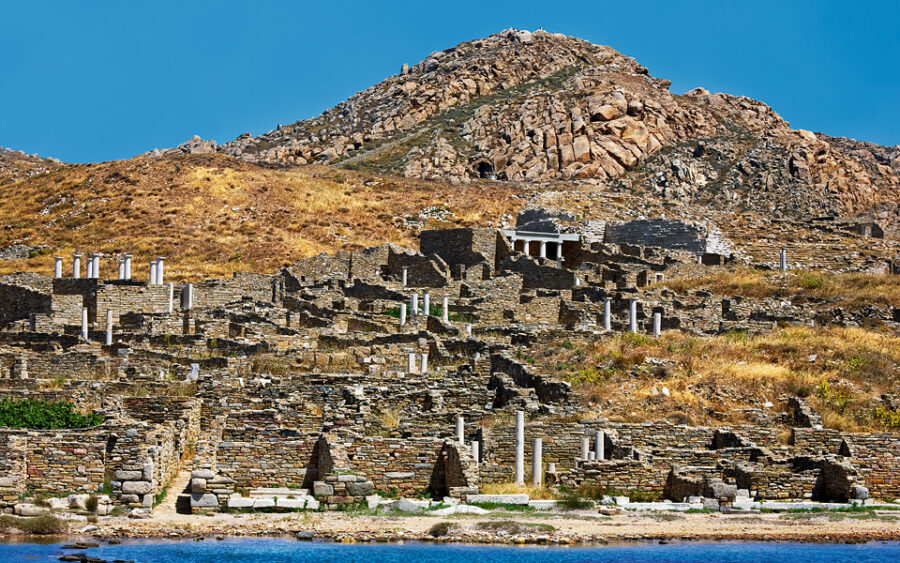
Mykonos isn’t a UNESCO site, but Delos—just a quick 30-minute boat ride away—absolutely is.
Boats run reliably May through October. September’s a sweet spot: warm enough to wander, but not as brutal as July.
Delos is packed with ancient mosaics, ruined dwellings, and those famous Terrace of Lions statues.
Go in the morning if you can. Shoulder season means pleasant temps, usually around 70-75°F (21-24°C). Bring comfy shoes and a hat—there’s no shade.
If you’re visiting in September, book your Delos tour just a day or two ahead. In August, you need to plan way further in advance.
Frequently Asked Questions
When you visit Mykonos can totally shape your trip. Travelers always ask about the party season, budget tips, and the best weather.
What are the ideal dates for experiencing Mykonos’s legendary nightlife scene?
If you want the full Mykonos party, come between mid-June and mid-September. July and August are wild—huge DJs, packed clubs, and even the odd celebrity at Paradise or Super Paradise.
Clubs go all night, and the vibe is electric. If you want the party without the chaos, late June or early September is your window. Still lively, but you can actually breathe.
How do the seasons affect the tourist experience in both Mykonos and Santorini?
Both islands follow similar seasons, but with their own twists. Summer means crowds everywhere, but Santorini leans romantic while Mykonos goes full-on party.
April-May brings wildflowers and milder temps. Santorini’s sunsets pop more in spring, and you won’t have to fight for a view.
September and October? Warm seas, chill weather, and fewer people. Mykonos’s winds usually calm down after August, so beach days get nicer.
Winter strips it all back. Most places close, but you’ll see the real Greek island life.
When can visitors expect the best balance between pleasant weather and smaller crowds in Mykonos?
September nails it. The water stays warm (about 75°F/24°C), and the air sits comfortably in the mid-70s to low 80s.
Early June is another good bet. Crowds haven’t hit full throttle, prices are a bit lower, and the sun’s out without July’s scorch.
Late May’s nice too, especially if you don’t care about swimming. Wildflowers everywhere, and hotels are more affordable.
What are the lesser-known perks of visiting Mykonos during the off-peak season?
April and May let you see a more genuine Mykonos. Locals have time to chat, and you might even get invited to a family gathering or festival.
October surprises with warm seas—sometimes warmer than the air! Morning swims feel amazing before the winds pick up.
Photographers love off-season light. Spring and fall give everything a softer, golden look that just makes those white buildings pop.
In shoulder season, restaurant owners get creative. Without the tourist crush, chefs roll out traditional Greek dishes you won’t find in summer.
Could you highlight the months suitable for beach-goers looking to enjoy Mykonos’s waters?
Swimming season starts in late May, when the sea hits about 68°F (20°C). By June, it’s up to 72°F (22°C), which feels pretty nice.
July and August bring the warmest water—75-77°F (24-25°C)—but also the strongest Meltemi winds, especially up north.
September really shines for beach days. The water stays warm, the winds calm down, and the crowds thin out.
Early October? Kind of a secret. The tourists are gone, but the sea can actually be warmer than the air. It’s a great time for a dip.
Are there specific times of the year when Mykonos offers the most value for money in accommodations and services?
May and October usually give you the best deals. Hotel rates drop by 30-50% compared to the madness of peak summer.
Restaurants also get creative, rolling out special menus and tempting promos just to fill tables. It feels like everyone’s trying a bit harder for your business.
If you want a sweet spot, check out the first two weeks of June or the last two weeks of September. The weather’s almost perfect, the island still buzzes, but you dodge the wild high-season prices.
Try booking your place to stay about 4-6 months ahead if you’re eyeing these shoulder seasons. You might snag an early bird discount—sometimes 15-25% off—especially if you poke around a bit.
Keep an eye on the calendar, though. Some events, like the Mykonos Biennale (usually in odd-numbered years) or certain religious festivals, can suddenly bump up prices, even when you thought you’d found a quiet deal.

